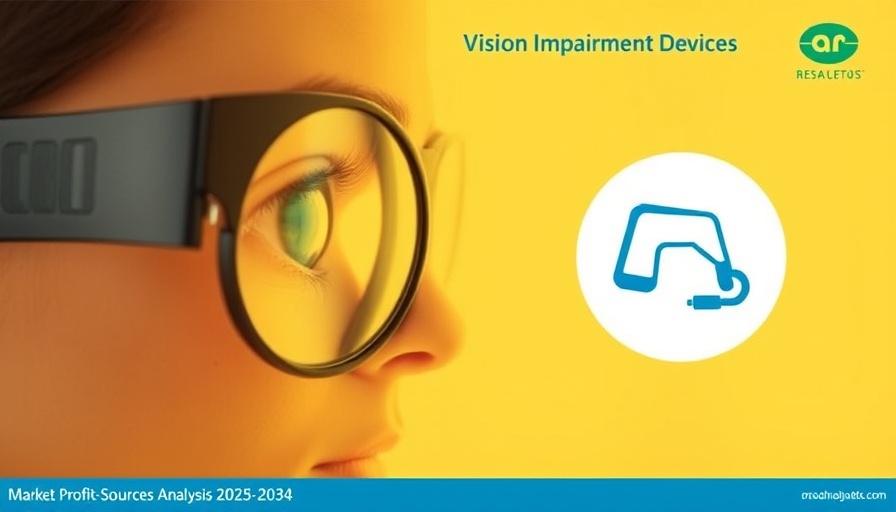
The Rise of Vision Impairment Devices: A Beacon of Hope
The global market for vision impairment devices is set to experience considerable growth, projected to reach an 8.4% CAGR from 2025 to 2034. This surge is not just a statistic; it reflects the urgent need for innovative solutions that empower individuals facing vision challenges.
Understanding Vision Impairment Devices
Vision impairment devices, often termed assistive technologies, play a crucial role in helping individuals with low vision or blindness navigate their environments and lead independent lives. These devices encompass a wide range of tools—from basic, everyday aids like magnifying glasses and mobility canes to sophisticated digital technologies that utilize artificial intelligence.
Low-tech options, such as simple magnifiers and large-print materials, provide straightforward, effective solutions for everyday tasks, allowing users to read and perform activities with greater ease. White canes are invaluable for mobility, helping users detect obstacles and signaling their visual challenges to others. Meanwhile, high-tech devices, including braille displays and apps designed for smartphones, make digital content more accessible and enhance the quality of life for visually impaired individuals.
Innovations and Technologies at the Forefront
Recent innovations in vision impairment devices have led to the development of more advanced functionalities. For instance, smart glasses equipped with optical character recognition (OCR) can translate written text into voice, allowing users to understand their surroundings without needing to rely on others.
Moreover, electronic travel aids (ETAs) use ultrasonic sensors to guide users, making navigation through unfamiliar spaces not only safe but also more confident.
Market Drivers: What’s Fueling Growth?
Several factors contribute to the increasing demand for vision impairment devices. The prevalence of age-related vision conditions—such as macular degeneration, glaucoma, and diabetic retinopathy—especially among aging populations in developed nations, underpins a societal need for accessible solutions.
In addition, the ongoing development of wearable technology and AI-driven screen readers continues to enhance both functionality and ease of use for users.
Social Impact: Changing Lives
The social implications of these devices are profound. By enabling people with visual impairments to engage more fully in society, they provide individuals with both independence and dignity. Support from advocacy groups and non-profits has significantly raised awareness, encouraging the adoption of these technologies.
As many communities strive towards inclusivity, the integration of assistive devices in schools, workplaces, and public facilities reflects a commitment to empowering individuals with disabilities. By improving access to education and employment opportunities, vision impairment devices contribute significantly to enhancing the overall quality of life.
The Competitive Landscape: Key Players in the Market
The vision impairment devices market boasts numerous key players committed to innovation and improved user experience, such as HumanWare, Vispero, and OrCam. These companies play an integral role in enhancing the technological offerings available to individuals facing vision challenges.
Through strategic collaborations and continuous improvements to their product lines, these leaders are shaping the future of vision impairment solutions, ensuring that they meet the actual needs and identities of their users.
A Look Ahead: Future Trends
As technology continues to evolve, we can expect even more groundbreaking advancements in vision impairment devices. Emerging trends, such as augmented reality (AR) integration and improved AI capabilities, are at the forefront of discussions among developers, researchers, and healthcare professionals.
This evolution promises to not only redesign the way people experience their environment but also bridge the gap that visually impaired individuals often encounter daily. The ongoing focus on user-friendly designs and cost-effective solutions will likely remain a cornerstone of this rapidly advancing field.
Final Thoughts: The Road Ahead for Vision Impairment Devices
The vision impairment devices market is not only about business; it's about making a difference. As we move towards 2034, the commitment to enhancing lives through cutting-edge technology becomes clearer than ever. Education, innovation, and advocacy will be critical in ensuring that everyone, regardless of their vision, can lead a life filled with independence and opportunity.
 Add Row
Add Row  Add
Add 




Write A Comment